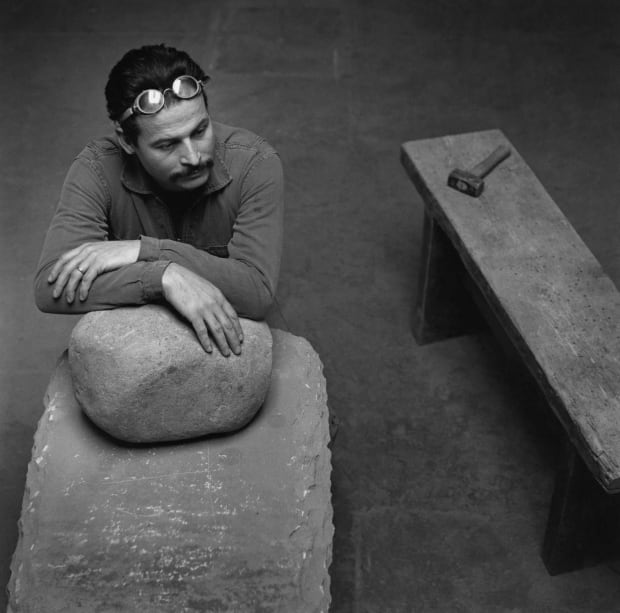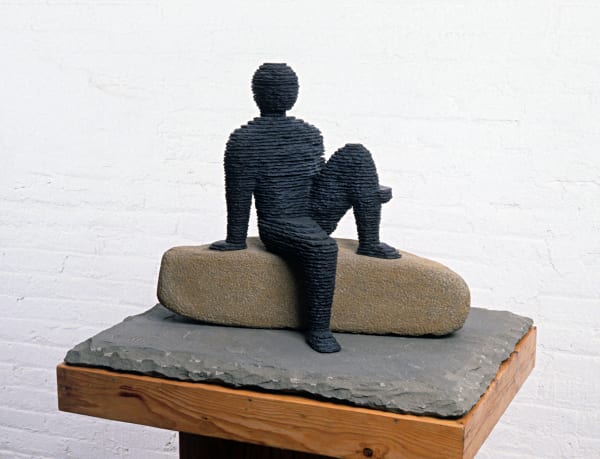-
Boaz Vaadia
-

-

-
"I work with nature as an equal partner. . . That's still the strongest thing I deal with today, that primal connection of man to earth. It's in the materials I use, the environments I make and the way I work." - Boaz Vaadia
-
-
Vaadia hand carves slices of slate and bluestone, shaping them to be layers in a kind of topographical map. He stacks the horizontal slabs until the graded silhouette of a person, animal or group emerges. Sometimes he places a long single stone piece across a layer within juxtaposed figures to unite them. This subtle strategy suggests the merging and love shared between the figures. He views the geological layering of the stone as a natural model for his own sculptural process. It seems a logical metaphor for our human layering of experience and memory.
-
Current Exhibit
-
-
Boaz Vaadia: Sculpture
Past viewing_room








